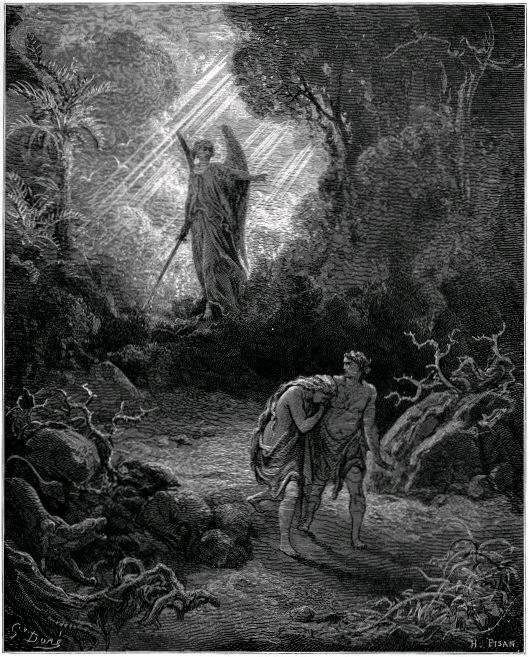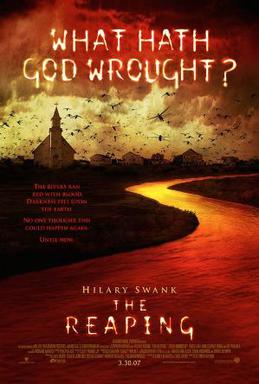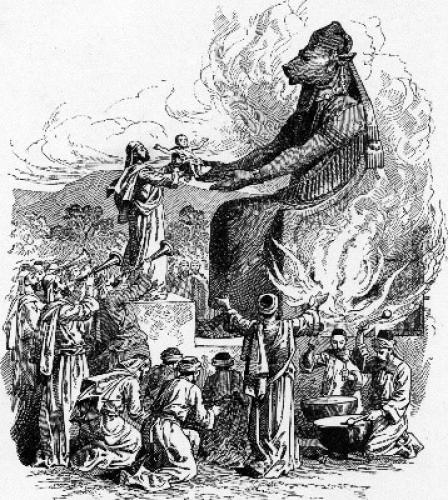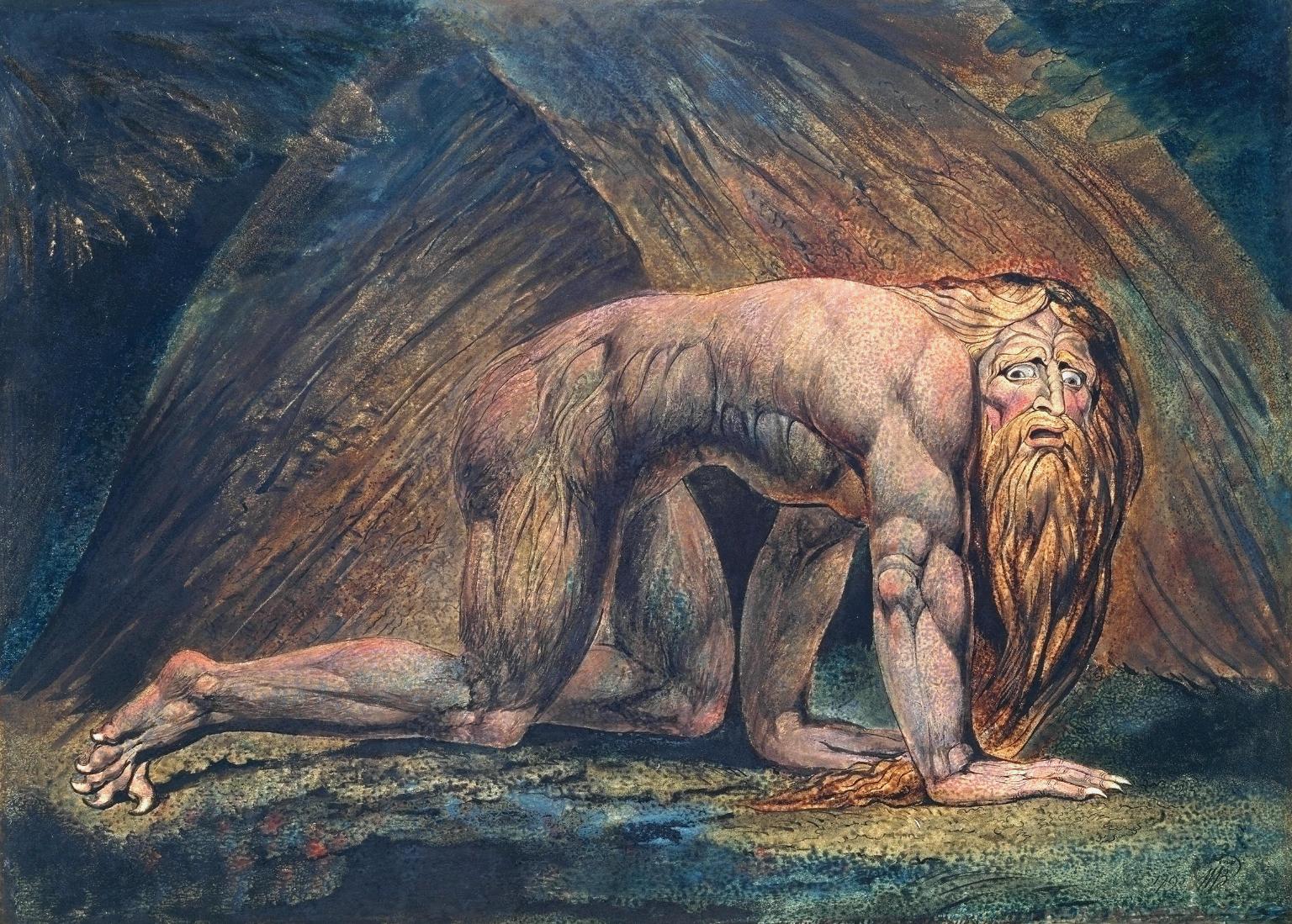The genre of horror is typically seen as incompatible with Christianity. Though not representative of all evangelicals, many reject the entire horror genre, seeing it as a vehicle of occultism, and a tool for Satan. At the least, they argue, Christians should be focused on “the good, pure, and true” (Phil. 4:8) and not depictions of darkness and evil. Though impassioned, many such critiques of the horror genre lack theological depth. Nevertheless, these objections remain common among evangelicals.
What makes evangelicals’ avoidance of the term “horror” so ironic is the proliferation of dark, horrific content in the Bible.
The likely reasons for this disavowal of the horror genre is something I explore in my book Christian Horror: On the Compatibility of a Biblical Worldview and the Horror Genre. Yet one thing that makes evangelicals’ avoidance of the term “horror” so ironic is the proliferation of dark, horrific content in the Bible. Indeed, Scripture contains a significant number of frightful, disturbing images and stories.
In this article, I have endeavored to compile a list of the Top 10 Horror Stories in the Bible. Of course, these biblical references aren’t all “stories,” per se. Some are events or incidences, while others are themes or categories (like “sin” and “hell”). Such lists are always subjective. For example, some will find the Rape of Tamar far more horrific than the Gadarene demoniac incident. Either way, it’s hard to argue that the Bible is a feel-good book… especially when it contains so much horrific content. So here’s my stab (pun intended) at The Top Ten Horror Stories in the Bible.
All Scripture quotes are from the NIV unless specified.
***

The Fall of Man — This will undoubtedly fly under the radar of some who are odd enough to make such lists. But sin, its origins, effects, and consequences, are indeed the primary stuff of the horror genre. While films like Se7en depict the horrors of the Seven Deadly Sins, the very concept of spiritual and moral degradation are rooted in the idea of Man’s fallenness. Sin is an unnatural state; a condition which has radically deformed and destroyed humans. Men become Monsters because of sin. Robert Louis Stevenson’s The Strange Case of Dr. Jekyll and Mr. Hyde probes this idea of these dual natures — a civil, humane nature and a beastly, wicked nature. It is a motif threading both Scripture and the horror genre. Because of the Fall, the Bible proclaims, “There is none righteous, no not one (Rom. 3:10). Indeed, the Fall of Man is a pivot of biblical history. Not only was Paradise torn asunder by Adam and Eve’s delinquency, but their relationship with God was severed. Man’s alienation from his Creator, and the subsequent consequences, is one of the most tragic, horrific narratives in Scripture.
The Flood of Noah — Even though Noah and his ark are the stuff of nursery rhymes, the incident itself is laced with nightmarish imagery. The Flood was an act of Divine judgement. “The Lord saw how great the wickedness of the human race had become on the earth, and that every inclination of the thoughts of the human heart was only evil all the time. The Lord regretted that he had made human beings on the earth, and his heart was deeply troubled” (Gen. 6:5-6 NIV). It was the depravity of the human race (see: the Fall of Man) that moved God to judgment. In fact, that judgment was rather slow and excruciating. Unlike a lightning strike or a cardiac arrest, the floodwaters rose incrementally. Entire cities probably scrambled to survive. Frantic victims clung to makeshift rafts, pleading to be drawn into the Ark. The bloated carcasses of beasts and humans likely blanketed the waters. How many hundreds of thousands (millions?) of human beings died? The Flood of Noah was probably one of earth’s earliest mass extinction events. Not to mention, a boat jammed with reptiles, leopards, porcupines, skunks, and vultures carried its own unique horrors.

The Plagues of Egypt — The 10 plagues of Egypt (Exodus chs. 7-11) is one of the most unique collections of miracles found in Scripture. Also, one of the most awful. Indeed, some of the individual plagues leveled by Jehovah against an obstinate Pharoah, are cringe-inducing. Swarms of lice. Outbreaks of boils. Infestations of frogs. Rivers of blood. This alone should have brought Pharoah to his knees. But it only made him more defiant. Which led to the most solemn of all the plagues — the death of every first-born son (Ex. 12). Often missed in our reflection upon this story is its backdrop. Not only is Moses sent to rescue the Israelites from their Egyptian captivity (Ex. 9:1), but this rescue involves a clash of spiritual superpowers. “[A]gainst all the gods of Egypt I will execute judgment: I am the Lord” (Ex. 12:12 NIV). The Plagues of Egypt were the manifestation of a supernatural war: Yahweh vs. the gods of Egypt. That this divine conflict culminates in a largescale slaughter of first-born males by a destroying angel (Ex. 12:23), or an “angel of death,” only compounds the horror. It’s no surprise, then, that the event has so cauterized our collective psyche as to warrant a horror film re-enacting the plagues and led to the anthologizing of Horror Stories for Each of the Passover Plagues. The Plagues of Egypt are a virtual tour de force of classic horror tropes — death angels, battling “magicians,” scourges of bugs and boils, mass death, and a clash of gods. Break out the popcorn!
Sodom and Gomorrah — Another Old Testament entry into the horror category must be the judgment leveled by God against the cities of Sodom and Gomorrah. While some contemporary commentators have attempted to strip the story of its historic connection to homosexual perversion, Scripture is clear. For example, as the story unfolds, two angels are sent to Lot to rescue him. However, when the city learns of the presence of these two strangers, “the men from every part of the city of Sodom—both young and old—surrounded the house. They called to Lot, ‘Where are the men who came to you tonight? Bring them out to us so that we can have sex with them'” (Ge. 19:4-5). While some attempt to deflect the nature of the city’s sins, the New Testament writers corroborate its deviance. Illustrating God’s judgment, the apostle Jude wrote, “In a similar way, Sodom and Gomorrah and the surrounding towns gave themselves up to sexual immorality and perversion. They serve as an example of those who suffer the punishment of eternal fire” (Jude vs. 7). For these reasons, most Orthodox Jewish and Christian scholars have held the position that Sodom and Gomorrah were destroyed because of wanton sexual perversions and unbridled homosexual behavior. Like the Flood of Noah, the method of execution is cringeworthy. Brimstone is often associated with sulfur, mostly in relation to lava and volcanic emissions. So not only is an entire region overrun by orgies, rapes, and crazed sexual deviants, it is leveled by hot ash and molten rain. Not exactly the kind of story to tell the kiddies at bedtime.
The Parable of the Rich Man and Lazarus — Jesus was known as a storyteller. What is often overlooked is the dearth of inspirational stories in His canon. Indeed, some of His tales were rather bleak. The story of a rich man agonizing in hell, pleading for escape, is one of them. It’s found only in the Gospel of Luke, chapter 16. The story is about two very different men who die and end up in very different places. The “rich man” ends up in hell, and Jesus pulls no punches about his eternal estate. Scripture describes the rich man as being in “torment” (vs. 16) and fiery “agony” (vs. 24). In fact, his suffering was so literal (as opposed to just mental or emotional) that the rich man cries out for water. “[S]end Lazarus to dip the tip of his finger in water and cool my tongue, because I am in agony in this fire” (v. 24). But no water is supplied. As a last resort, the rich man begs for someone to be sent, warning his brothers of this place. Sorry, he’s told. “They have Moses and the Prophets; let them listen to them” (v. 29). Hell is one of the most oft-referenced horror tropes, as well as a subject firmly rooted in Scripture. Hell is not a popular subject in contemporary culture, and many have undertaken to disabuse us of this ancient “scare tactic.” Jesus, however, spoke about hell more than any other biblical character. And He was quite explicit. He described it as a place of “outer darkness” where “there will be weeping and gnashing of teeth (Matt. 8:12 ESV). Elsewhere, Jesus characterized Hell as a “blazing furnace” (Matt. 13:42), a realm of “eternal fire prepared for the devil and his angels” (Matt. 25:41). This parable provides us with a glimpse into one of the most horrific realities in Scripture. So those reprobate friends of yours who flippantly dismiss hell as the ultimate party place may want to consult with the Rich Man before making permanent plans.
The Torments of Job — Believed to be the oldest book in the Bible, the Book of Job tackles the most excruciating of topics — human suffering. Indeed, the sufferings endured by Job are both emotional and physical. Chapter one chronicles a succession of catastrophic events experienced by Job. First, his possessions are plundered (vs. 13-15), then his livestock were consumed (vs. 16), his camels were stolen, and his servants were murdered (vs. 17), followed by the tragic death of all ten of his children. If this were not awful enough, Job is then afflicted with “painful sores from the soles of his feet to the crown of his head” (Job 2:7). Further compounding Job’s torments is a wife who advises him to “Curse God and die!” (2:9) and three “friends” who philosophize about his pain, chastising him for perceived sin. Perhaps of special interest to the horror fan is the backdrop of Job’s story. For in chapter one we learn that Job’s sufferings occur as a result of an exchange between God and Satan (vss. 6-12). In fact, God places strict limits on what Satan can do to Job (vs. 12; 2:3-6). In the horror genre, much suffering inflicted upon characters appears random, pointless, and often gratuitous. Torture porn like Hostel and Saw are, in part, disturbing because of the inhumanity and callousness of its portrayal of suffering. However, the Book of Job frames human suffering in a much broader context. Job’s torments were demonic in origin; any human actors were tools of Satan. Furthermore, God was not insensitive to Job’s plight. Indeed, this one man’s tragedy is portrayed as part of a much larger story about God’s goodness and power, justice and mercy, and the appropriate posture of the human soul to agonizing existential suffering.

Human and Child Sacrifice — Whether it’s Robin Hardy’s classic The Wicker Man or Ari Aster’s Midsommar, human sacrifice holds a special place in the annals of horror cinema. But without question, the most heinous of all human sacrifice involves children. Human / child sacrifice plays a significant role in Scripture. This is due, in large part, to the ancient historical setting of the Old Testament. The Jews were called to be separate from the surrounding pagan cultures. Which is why child sacrifice was strongly forbidden in the Pentateuch. Deuteronomy 12:31 is a good example of a common prohibition: “You must not worship the Lord your God in their way, because in worshiping their gods, they do all kinds of detestable things the Lord hates. They even burn their sons and daughters in the fire as sacrifices to their gods.” The god Molech (or Moloch) is oft-referenced concerning child sacrifice. The Ammonites and Canaanites revered Molech, creating images of bronze whose outstretched arms were heated red-hot before placing a living child inside to be incinerated alive. Despite the prolific amount of condemnations of human sacrifice, the Israelites were often guilty of it. The evil Jewish king Manassah offered his son as a sacrifice (II Kings 21:6), as did King Ahaz (II Chron. 28:1-4). Many of these wicked leaders built high places, altars of worship, to pagan gods like Ashtoreth, Chemosh, and Molech (II Kings 11:4-11). Also, Jesus referenced Gehenna nearly a dozen times. The word Gehenna is derived from the Hebrew ge Hinnom, or the “valley of Hinnom.” The Valley of Hinnom is the site where Molech was worshipped via child sacrifice. The location was seen as defiled, unholy ground, and became synonymous with Hell. Human sacrifice has existed throughout history, and even continues today. In fact, many view legalized abortion, child sex trafficking, and child slave labor as contemporary forms of child sacrifice. The Scripture is explicit in its affirmation of human worth and its condemnation of human / child sacrifice. Nevertheless, the proliferation of the practice throughout ancient (and present!) history is a reminder of our debauched, reprobate natures.
The Demonic Legion — The story of the Garasene demoniac is well-known, even outside Christian circles. The incident has informed many traditions of exorcism, as well as many horror tropes. The story is recounted in three of the four Gospels, John’s gospel being the exception. In Mark’s gospel (Mk. 5:1–20), Jesus asks the demon for its name. It famously replies, “My name is Legion, for we are many” (v. 9). The practice of asking demons for their names is now common to traditions of exorcism. For example, in the film Deliver Us from Evil (2014), learning the name of the demon (Jungler) is crucial to its eviction. Indeed, many theatrical representations follow this formula. The fact that there were multiple demons is another common horror trope. For example, The Devil Inside (2012) portrays a mental patient possessed by four demons. The Exorcism of Emily Rose (2005), based upon the true story of a girl who underwent 67 Catholic exorcisms, allegedly was possessed by six demons. While there are different views concerning the actual nature of demons (some see them as fallen angels, while others see them as spirits of the dead Nephilim), the Bible is explicit about the existence of invisible demonic beings. They are tools of Satan (I Pet. 5:8; II Cor. 1:14–15), they spread heresy and false beliefs (II Tim. 4:1), they are part of a vast invisible network (Eph. 6:12), they deceive people (II Cor. 4:4), they attack Christians and seek to thwart the work of God (II Cor. 12:7; I Pet. 5:8), and they seek to torment humans. The Garasene demoniac was extremely violent (Matt. 8:28), “chained hand and foot and kept under guard” (Lk. 8:29), naked and living in a graveyard (Lk. 8:27). However, the horrific condition of the man is juxtaposed against Jesus’ power and compassion. Invisible evil entities are a common motif in the horror genre. Likewise, Scripture portrays the invisible world as real and the struggle against demonic entities equally so.

Christ’s Crucifixion — Perhaps the greatest example of biblical horror is the single act that uniquely defines the Christian faith — the crucifixion of Christ. Many have illustrated the gruesome medical details concerning the practice of crucifixion. In his book Eyewitness to Crucifixion: The Romans, the Cross and the Sacrifice of Jesus, Stephen M. Miller frames the process of crucifixion to that of “butchering an animal.” He elaborates on the brutal Roman practice which included being lashed, often exposing organs and causing massive blood loss, having “a heavy, wrought-iron nail [driven] through the wrist” nailing the victim to the cross, after which the individual suffered massive blood loss and “shock, exhaustion, asphyxiation, [before] finally [dying of] heart failure.” Indeed, the ghastly details of a crucifixion are why some consider Mel Gibson’s The Passion of the Christ, a horror film. Indeed, hundreds of years before Christ, the prophets predicted a suffering savior who would be “pierced for our transgressions” and “crushed for our iniquities” (Is. 53:4-5), even becoming “disfigured beyond that of any human being” (Is. 52:14). Two important biblical doctrines intersect at the cross of Christ — the Fall of Man and the Substitutionary Atonement. These powerful biblical doctrines are wedded at the cross. We are alienated from God, ourselves, and others, because of Adam’s disobedience. Our standing before God is marred because of our sinful nature and the specific acts we commit against His Law. The death of Christ upon the cross was intended to pay the penalty for our sins and justify our standing before God. Or as the Apostle Paul said, “[Christ] was delivered over to death for our sins and was raised to life for our justification” (Rom. 4:25). The ultimate consequence of the Fall of Man was the Death of God. The cost of our redemption incurred a cost more horrific than the human mind can imagine.
Perhaps the greatest example of biblical horror is the single act that uniquely defines the Christian faith—the crucifixion of Christ.
The Final Judgment — While the Parable of the Rich Man and Lazarus provides a glimpse into the afterlife, the Parable of the Sheep and the Goats (Matt. 25:31-46) highlights the fork in the road there. That fork begins at a throne. Christ is seated on that throne and all the nations will be gathered before Him (v. 31-32). There, a great sifting begins; a final judgment where the righteous move on into paradise (v. 34), and the wicked “go away to eternal punishment” (v. 46). The Book of Revelation describes a similarly horrific event with “the dead, great and small, standing before the throne” (Rev. 20:11). This is called the Great White Throne Judgment. There, books are opened which contain records of everyone’s deeds, whether they are good or evil (Rev. 20:12). Those whose names are found in “the book of life” move on into eternal bliss, while those whose names are absent are “thrown into the lake of fire” (v. 14). Sin, human depravity, and its ensuing judgment are thematic mainstays in the horror genre. Going back to Dante’s Inferno, where sinners were punished in accordance with which one of the Seven Deadly Sins they were most guilty, spiritual evil and moral reckoning have been essential to the genre. Not only does the Bible not shy away from showing us the realities of sin and the utter depravities of man, it is unflinching in its depictions of judgment upon sin: the Flood of Noah, the destruction of Sodom, the Babylonian captivity, the Crucifixion, etc. All of human history and all humans, both living and dead, are moving towards a reckoning, a final judgment. Perhaps the greatest of all horrors is to reach the end of your life having ignored or dishonored God. Thankfully, if you are reading this, you still have time for a course correction.
***
Honorable Mentions: The Rape of Tamara (II Sam. 13), the Witch of Endor (1 Sam. 28:3–25), Jael stabbing Sisera with a Tentpeg (Judges 4), Dead saints arise from graves (Matt. 27:50-53), Ezekiel’s Skeleton Army (Ezek. 37:1-14), Cannibalisms (II Kings 6:28-29), Bear mauls kids for mocking Elisha (II Kings 2:23-25), the Disembodied Hand (Dan. 5), the Locusts from the Abyss (Rev. 9), Beheading of John the Baptist (Matt. 14), Herod Eaten by Worms (Acts 12:23), The Levite and his Concubine (Judg. 19), Nebuchadnezzar’s madness (Dan. 4), Eglon stabbed (Judg. 3:12-25), the Seven Sons of Sceva (Acts 19).
















Good choices but The Levite and His Concubine should be higher on the list IMHO. Some translations have her dead with her hand on the threshold. That little piece of information makes the story so much harder to take. She crawls back to the man who betrayed her and doesn’t have the strength to open the door and he doesn’t bother to be waiting to open the door to let her in. She dies in complete abandonment and despair.
Hard to argue with that. It’s an incredibly bizarre and gross story.
Agree with Toni! Of all the accounts in scripture, hoe can that not be the most bizarre and weird horror? Cutting up the concubine from the limbs into twelve parts and sending the throughout Israel? And the judgment that followed???
Judges 19:25-30 NIV
But the men would not listen to him. So the man took his concubine and sent her outside to them, and they raped her and abused her throughout the night, and at dawn they let her go. [26] At daybreak the woman went back to the house where her master was staying, fell down at the door and lay there until daylight. [27] When her master got up in the morning and opened the door of the house and stepped out to continue on his way, there lay his concubine, fallen in the doorway of the house, with her hands on the threshold. [28] He said to her, “Get up; let’s go.” But there was no answer. Then the man put her on his donkey and set out for home. [29] When he reached home, he took a knife and cut up his concubine, limb by limb, into twelve parts and sent them into all the areas of Israel. [30] Everyone who saw it was saying to one another, “Such a thing has never been seen or done, not since the day the Israelites came up out of Egypt. Just imagine! We must do something! So speak up! ”